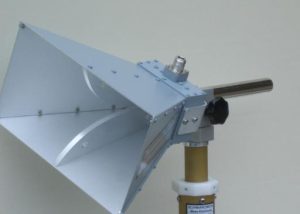How Does a Satellite Tracking Antenna System Work?
Core Components of the System
A satellite tracking antenna system is engineered to maintain a continuous, accurate lock on a satellite, ensuring reliable communication or data transfer. At the heart of this system are several key components: the antenna, the motor-driven mount, the tracking controller, and the signal receiver. Each component plays a vital role in ensuring the system can dynamically follow a satellite as it moves across the sky.

Antenna and Motor-Driven Mount
The antenna itself is typically a high-gain parabolic dish designed to focus the satellite signal into a concentrated beam for maximum signal strength. This antenna is mounted on a motor-driven assembly that can pivot in both azimuth (horizontal plane) and elevation (vertical plane) to track the satellite's path. These movements are crucial because most satellites, especially those in low and medium Earth orbits, move relative to the Earth's surface.
Advanced Tracking Techniques
Modern satellite tracking antenna systems employ sophisticated tracking techniques to maintain alignment with a satellite. One common method is programmed tracking, where the system uses pre-calculated satellite orbits to predict the satellite's path. This data, often updated in real-time from a network operations center, guides the motors to position the antenna precisely.
Real-Time Signal Feedback for Enhanced Accuracy
In addition to programmed tracking, many systems also use real-time feedback mechanisms, such as monopulse or step-track methods, to refine the antenna's position. These methods rely on detecting slight variations in the signal's strength or phase as the antenna moves slightly off-axis from the satellite. The system then adjusts the antenna to maximize signal quality, ensuring optimal performance.
Integration with Global Positioning Systems (GPS)
To further enhance tracking accuracy, many satellite tracking systems integrate GPS technology. This integration allows the tracking system to adjust for its own movement, especially important on mobile platforms like ships or vehicles. By knowing its exact location and movement, the system can make precise adjustments to the antenna's position to compensate for any changes in alignment due to the platform's motion.
Role of the Signal Receiver
The signal receiver is responsible for decoding the incoming signals from the satellite. This component is crucial for determining the quality of the signal and providing feedback to the tracking system. If the signal degrades, the receiver sends a signal to the tracking controller to adjust the antenna's position, ensuring that the system continually optimizes the signal quality throughout the satellite's transit.
Versatile Applications
From military and maritime operations to media broadcasting and data communications, the benefits of a satellite tracking antenna system are extensive. These systems are particularly crucial where uninterrupted satellite communication is vital, providing consistent, reliable connectivity regardless of the satellite's motion relative to the Earth.
Conclusion
Satellite tracking antenna systems represent a pinnacle of modern engineering, combining mechanical precision, advanced electronics, and sophisticated software algorithms. They ensure seamless satellite communications by dynamically adjusting to the satellite's trajectory, thus maintaining a high-quality link. As satellites become increasingly integral to global communications infrastructure, the role of these tracking systems becomes ever more critical.